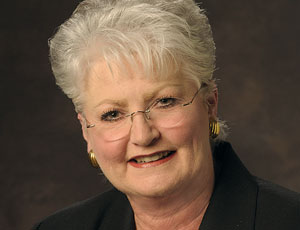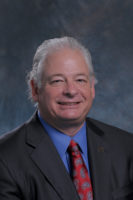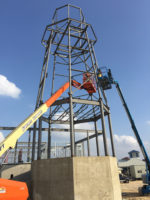Kristine Young has become the first woman installed as national president of the Associated General Contractors of America. CEO of Miller the Driller, a Des Moines, Iowa-based trenchless technology contractor, she was inaugurated on March 25 at AGC�s 92nd annual convention, held this week in Las Vegas.

The association’s front-burner issues this year include federal investment in infrastructure, new ways to connect with members and coping with the recession.
Young is well aware of the tough economic times facing the engineering and construction industry. The incoming president’s Des Moines-based underground construction company, Miller the Driller, filed a Chapter 11 reorganization petition Jan. 14 in U.S. Bankruptcy Court for the Southern District of Iowa.
Young, 60, was named president of the trenchless technology contractor in 1982. The company thrived during the 1980s until 2003, as oil and gas exploration and fiber-optic cable work created a healthy backlog for directional drilling contractors. But the economic climate changed and in January her local bank shut down the company’s line of credit and demanded immediate payment of outstanding loans. “It was a surprise and absolutely devastating,” Young says. “Like a lot small contractors, we are too big for a small bank and not large enough for a big one. That’s why small companies tend to get kicked around more often.”
Miller the Driller was founded in 1948 by Young’s father, Gene Miller. The firm, which works across the U.S. with a concentration in Iowa and Illinois, reported 2010 revenues of $6.5 million.
Young, who became president of the company in 1982, says that Iowa went into the recession early and started to emerge in 2009, so her business is coming back. “Miller the Driller has strong receivables, and we hope to emerge from this by this fall.” The company is also looking at some possible merger opportunities.
The experience has made Young even more empathetic to what many of her industry colleagues are experiencing. “The ripple effects on my family have been enormous, but the industry is standing behind me, and AGC has been a lifeline,” she says. “Miller the Driller�will survive this and move on.”
“The national and local chapters need each other more now than ever,” she said. “We have the right tools in place. We just need to strengthen them, raise the bar and get contractors to use AGC more to help them through these tough times.”
Young says she will ask her executive board to make more chapter visits, better utilize social media to reach younger members and get them involved on as many levels as possible. “I want contractors and subcontractors of all sizes to see the full potential that the association has for them,” she says.
AGC CEO Steve Sandherr says the organization wants “to bring more members into the dialogue about solutions for issues facing the industry.”
Chief among those, Sandherr says, is helping leaders in Washington, D.C., focus on the immediate need for “smart, long-term investments in American infrastructure,” at a time when the industry is reeling from high unemployment and historically low construction spending, especially from the private sector. Sandherr promises that AGC will launch a “highly detailed plan” on infrastructure spending in mid-May.
Federal transportation funding “is still suffering a hangover from the �bridge to nowhere,’ and that was six years ago,” he said. “We need to educate people about the difference between spending and investments, and streamline our processes to get these transportation projects built quickly—to bring a sense of urgency to every project.”
AGC is also using the convention to promote the recent launch of its new industry plan, called “Building a Stronger Future, A New Blueprint for Economic Growth,” which outlines measures to help boost private-sector demand for construction, tackle a growing infrastructure maintenance backlog and reduce red tape and regulations. It calls for approving pending trade agreements to boost demand for manufacturing and shipping facilities, repealing the alternative minimum tax and making permanent the tax cuts put in place in 2001 and 2003.
AGC is also making some changes to its service structure, replacing its internal committees with forums, which allow for broader participation by members and enhance the use of webinars and other technology for meetings, says Brian Turmail, the association’s director of communications.
“The forums provide opportunities for more collective information sources and make it easier for more people to get involved in AGC,” he says.
With attendance at this year’s convention at “just north of 2,800,” Turmail says, it is not a record-setter, but surpasses last year’s attendance in Orlando. “It is our chance to have a face-to-face conversation with members and set our agenda for the coming year.”




Post a comment to this article
Report Abusive Comment